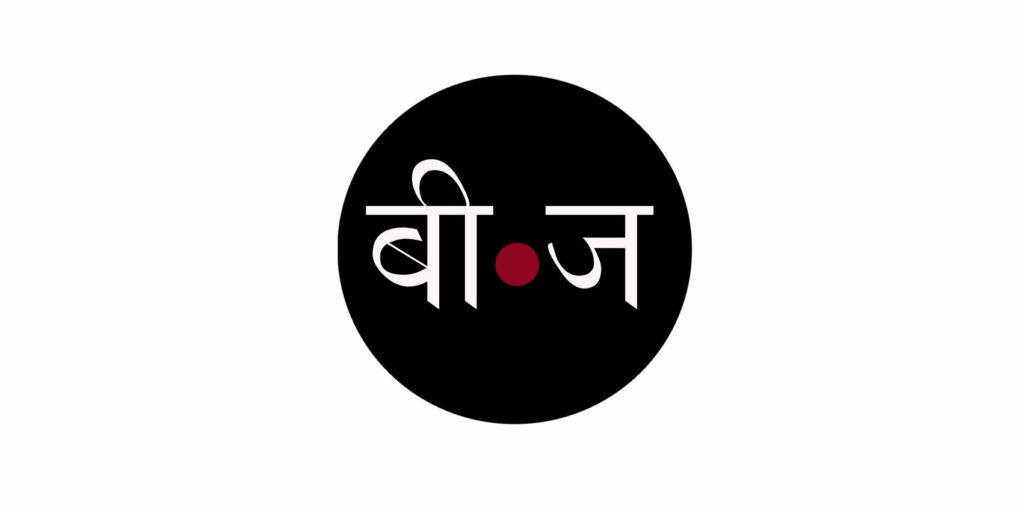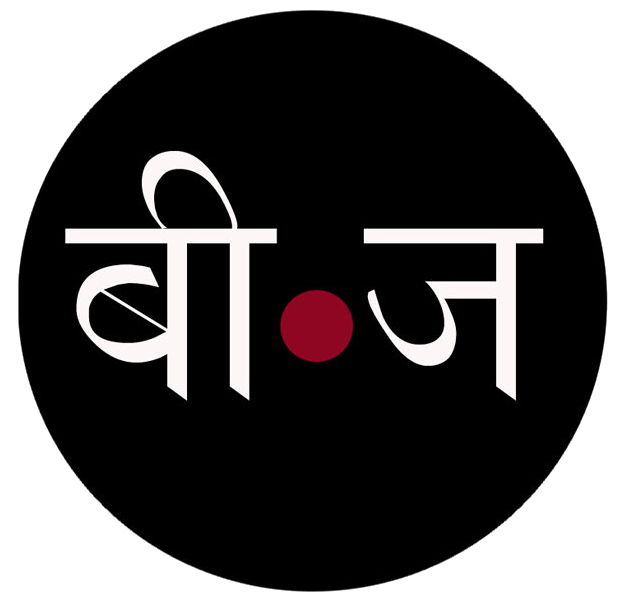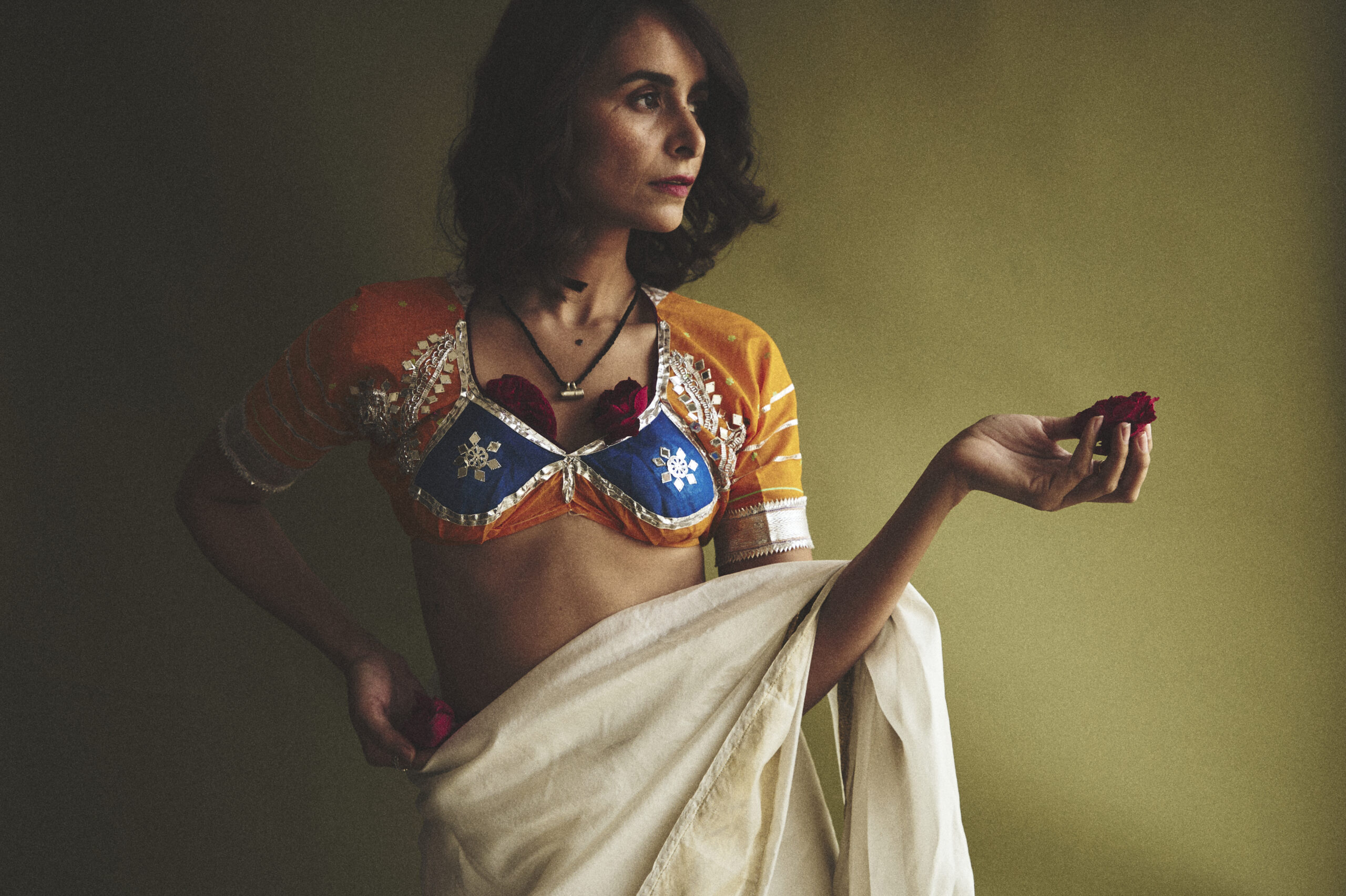The Heritage Bride by Asha Gautam
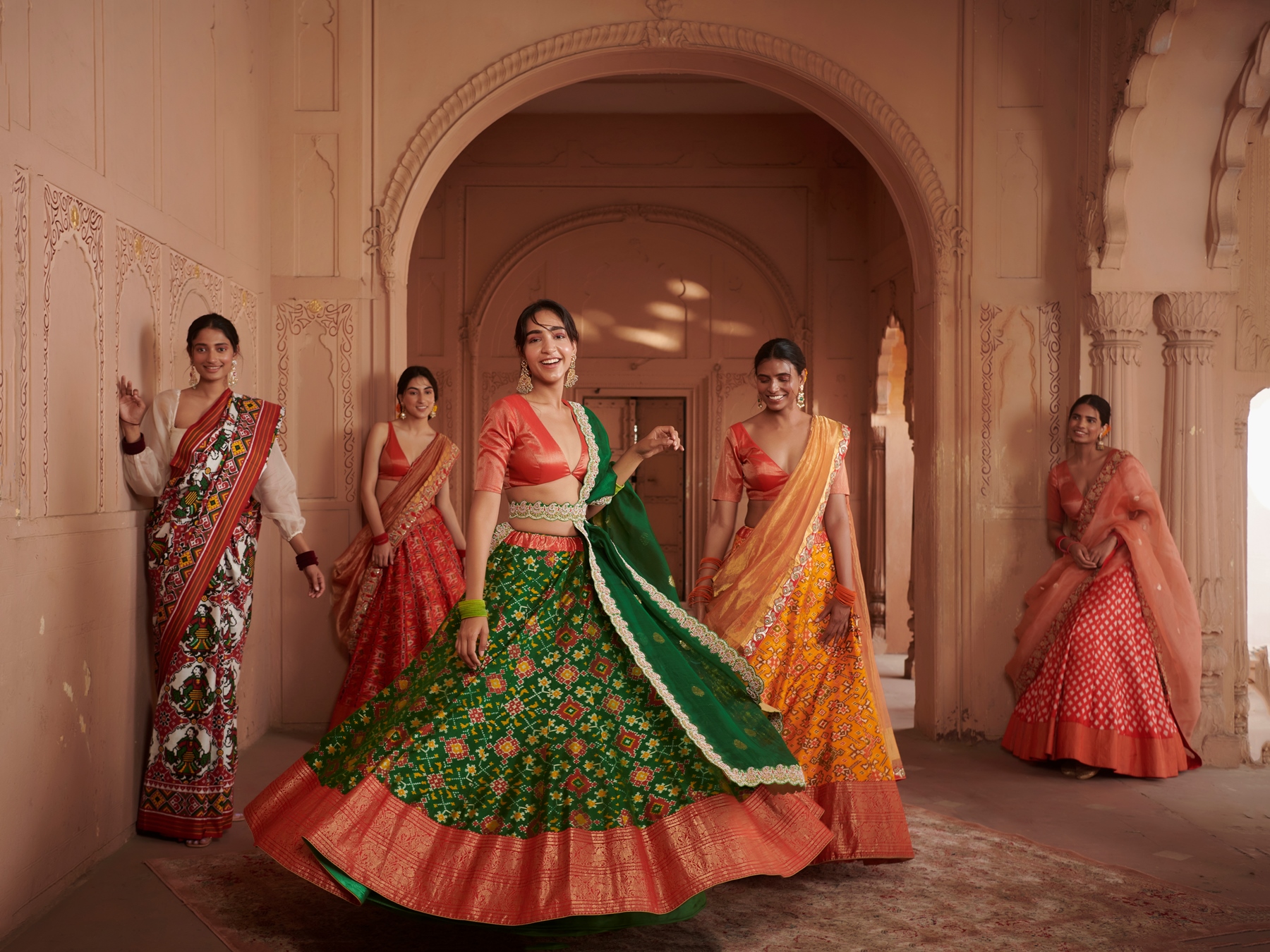
Delhi-based heirloom bridal label Asha Gautam completed a quarter century in 2023. Beejliving travels to New Delhi to trace its journey through warp and weft
In 1998, Asha Gupta fused her love for India’s rich artistry and craftsmanship with her discerning fashion sensibilities. She embarked on a journey of reviving and reinvigorating traditional weaves, significantly heirloom sarees. In 2003, her son, Gautam Gupta, a graduate from NIFT, joined her, bringing a novel perspective to the eponymous heritage bridal label. “At that moment we began to approach the business from a more strategic perspective, focusing on strengthening our philosophy,” says Gautam.
In the past quarter century, Asha Gautam has nurtured a distinctive design vocabulary for the modern Indian bride. The transition from sarees to lehengas unfolded naturally in response to the growing demand from their clientele.
Forming a canvas for their bridal couture are weaves in a lush tapestry of vibrant hues, adorned with intricate appliqué work, opulent embroideries like convent and French knots, traditional nib painting, and the artistry of bandhani and the delicate elegance of chikankari. These grace traditional textiles as diverse as Kota Dori, Banarasi Zari, and Paithani and Patola weaves.
Travelling to weaving districts such as Paithan, Bhuj, Pochampally, and Uppada, the duo engages with artisans in seven states, 15 clusters, with more than 30 Indian crafts, and hope to eventually impact the lives of 10,000 artisans through their label.
“It has been a truly enriching and heartening journey,” says Gautam, who speaks to Beejliving about major milestones, the modern Indian bride, and how the brand is strengthening its commitment to sustainability.
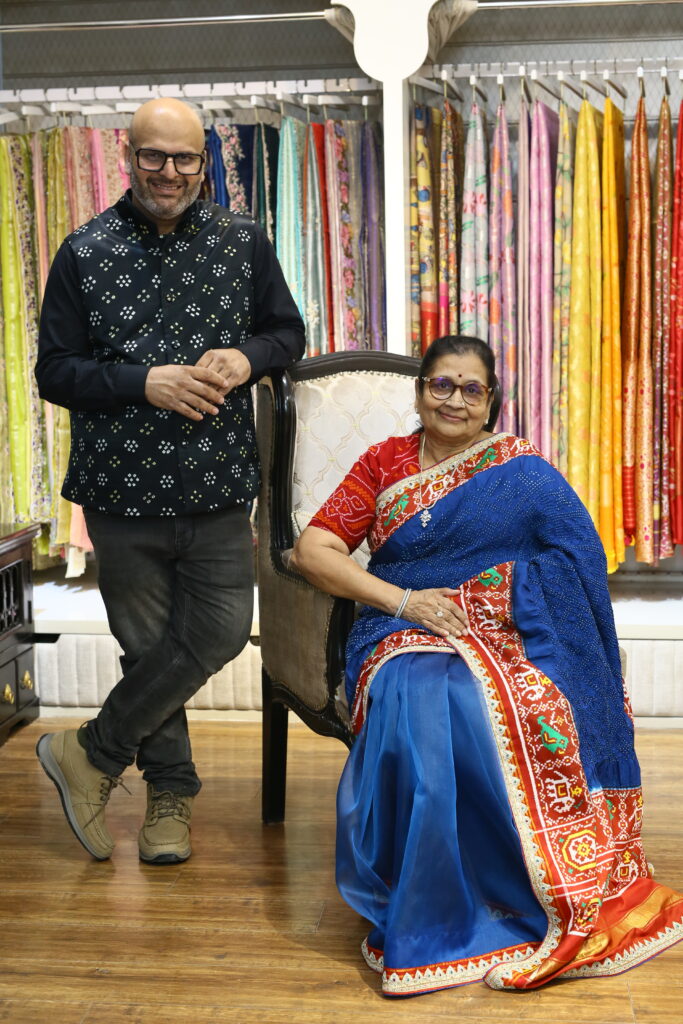
Do share the significant milestones and key lessons learned during the 25-year journey of the label.
We recognised early in our journey that the real talent of our country resided in its interiors. This led us to visit various artisan clusters and engage in collaborations to co-create new fabrics over time. Our resources were limited, and we had to generate enough income to invest in specific clusters, given that producing unique handwoven masterpieces like Paithani, Patolas, Jamdanis, and Rangkats required substantial investments and time.
Similarly, establishing an embroidery unit where rare embroideries such as knot and petit points involved extensive training and time, so it took us several years to shape Asha Gautam into what it is today.
Our work on Banarasi lehengas and Paithani sarees has been instrumental in innovating textiles and weaving styles, significantly impacting the lives of weavers. These innovations also garnered significant attention in the handloom industry and we were invited to participate in handloom shows by organisations such as the Textile Ministry in collaboration with FDCI, as well as entities like FICCI and JITO. The recognition and accolades played a pivotal role in organically expanding our brand presence.
Another milestone close to my heart is our dedication to recycling and upcycling old sarees and textiles, a practice we’ve upheld for the past 25 years, rejuvenating 1,000s of cherished pieces for our clients.
One of the most significant lessons we’ve learned is the importance of effective communication. For nearly 12 to 15 years, we didn’t invest heavily in marketing and storytelling, as our time was devoted to developing our core competencies. It’s only in the last five to six years that we’ve made substantial efforts to communicate our brand, share our story, and define our brand philosophy.
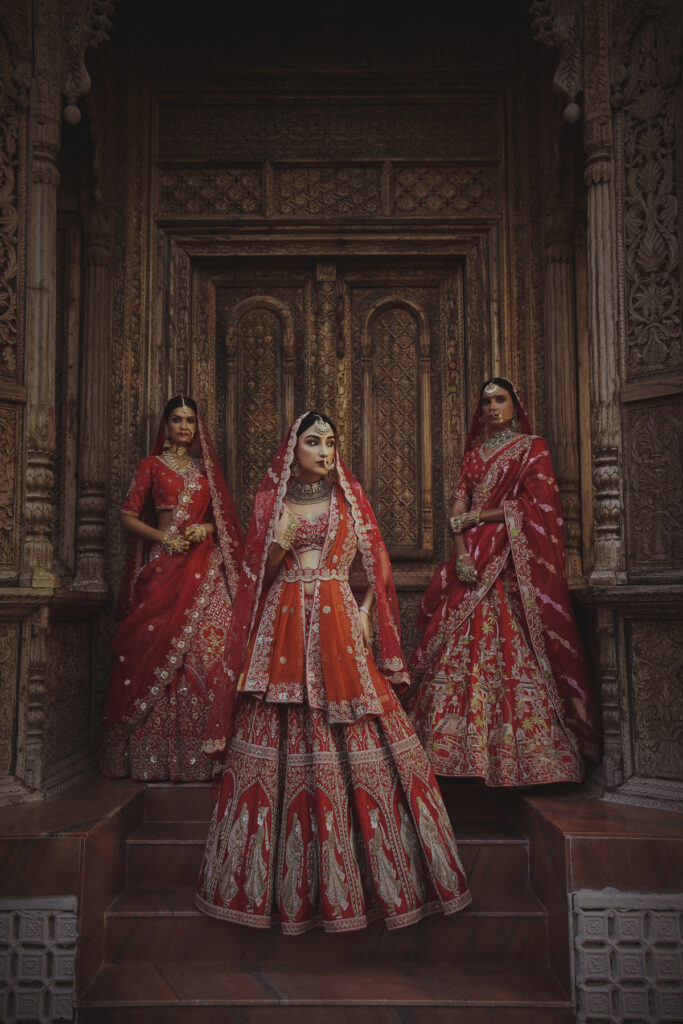
The label is recognised for its time-honoured craftsmanship. What distinctive artisanal techniques and craftsmanship have defined your brand over the years? Additionally, what are the pivotal elements that differentiate the bridal collections from the rest?
Embroidery has been the brand’s cornerstone since its inception, with a focus on techniques like French knots, petit point embroidery, zardozi, and Kasab. Over time, French knots evolved to become our signature style.
We also delved into weaving innovations, particularly in Lohta, a district just outside Benaras, which became a hub for our textile experimentation. Here, we crafted unique fabrics by interweaving different yarns and exploring new patterns, motifs, and colours.
This venture proved immensely successful, and we replicated this strategy in other artisan clusters, with varying degrees of success. Our pioneering work in Paithani and Patola weaves also garnered acclaim.
When we planned the relaunch of our bridal couture, our first decision was to infuse storytelling into our collections, rather than creating conventional lehengas, drawing inspiration from our travels. Vrindavan was our initial endeavour in this direction, where we sought to capture the essence of the place, the landscapes, and the love story of Radha and Krishna through khakas. We incorporated our signature knot embroideries and other techniques to narrate our collections.
Although only a few artisans remain skilled in intricate techniques such as knots, petit point, Dabka, Kasab, Kashmiri Ari, Salma, Kora, Farsi Jaal, and Dori, among others, we still have access to these masterful artisans. This scarcity of traditional skills is why we are dedicated to preserving them and using them in a contemporary way for our future bridal couture collections.
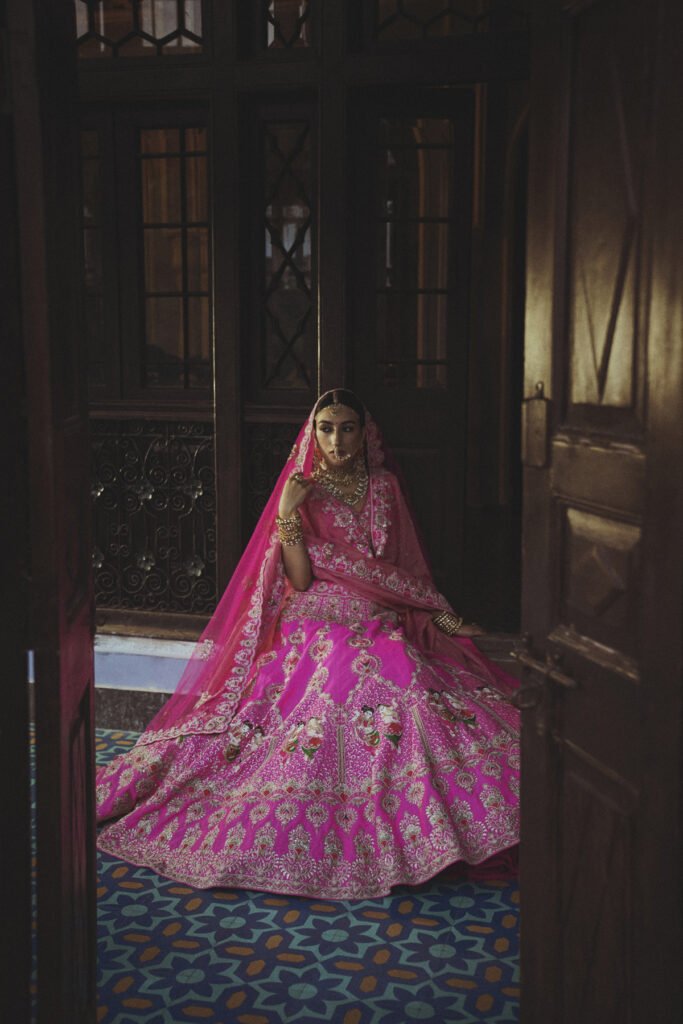
How has the evolution of bridal fashion in India shaped the contemporary fashion landscape? Is the timeless sari still a prominent choice?
The realm of bridal fashion encompasses a multitude of dimensions. Modern brides exude confidence in their choices. No single trend reigns supreme, as diversity prevails. Some brides hold a strong affinity for the timeless red bridal ensemble. Others seek a more contemporary look, opting for unique colours or even saree gowns. Furthermore, some still embrace the elegance of a saree, allowing its rich legacy to convey their style.
Each bride arrives with her own unique fantasies, preferences, and financial constraints. In today’s era of social media, many brides gravitate towards brands that resonate with them on a personal level.
In our case, most Asha Gautam brides are enthusiasts of subtle grandeur, handmade craftsmanship, intricate embroideries, and majestic weaves. Our brand has maintained a consistent focus on vibrant colour palettes, handwoven textiles, intricate embroideries, and motifs inspired by nature and landscapes. Occasionally, we draw inspiration from significant moments in history.
Asha Gautam has a rich history of interpreting tradition with a modern outlook. How did this translate in the latest bridal collection?
In our initial collection, we didn’t attempt to modernise our theme; instead, we focused on catering to brides who cherished traditional bridal attire. However, in our upcoming collection, we’re developing three distinct moods, one of which will be contemporary.
This modern mood in our new collection will feature a unique colour palette, moving beyond the traditional reds. The motifs and khakas will take on a different character, incorporating embroidery techniques like 3D, appliqué, and laser cutting. We will also introduce custom-made fabrics, and perhaps most importantly, the silhouettes will tell a completely new story.
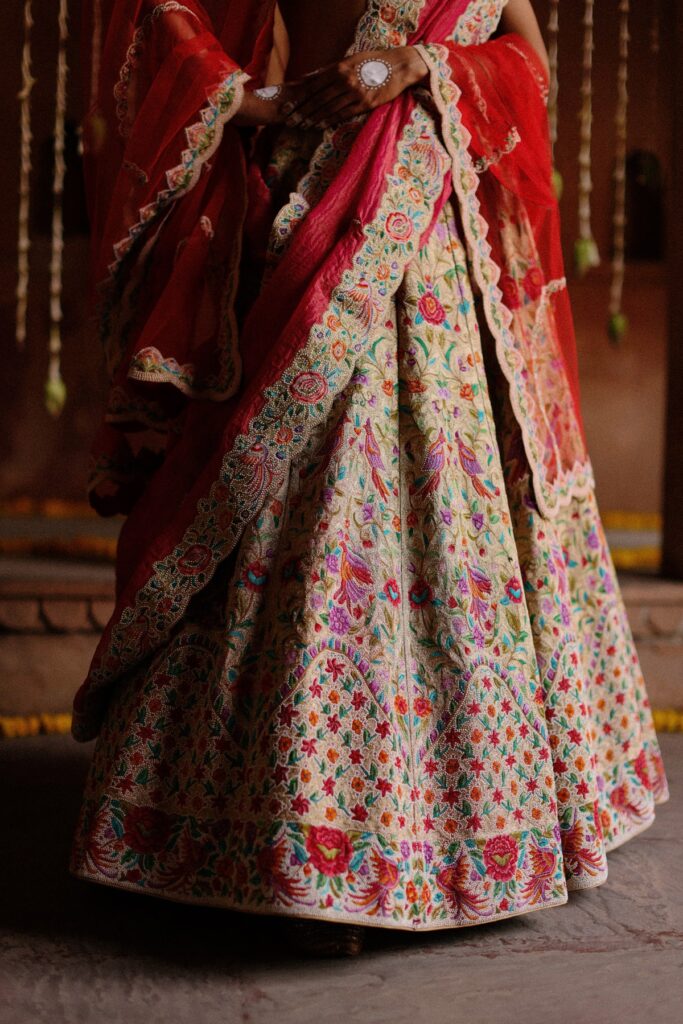
How have you approached eco-friendly and responsible fashion practices?
To be honest, when we embarked on our journey in 1998, we weren’t necessarily using the vocabulary of sustainability; rather, our approach was rooted in the habit of conserving resources, much like middle-class families often do. Our primary focus was on offering value for money in our collections. This is why timelessness became a core principle for us.
We believed that if someone was investing significantly in our pieces, they should be able to wear them on multiple occasions and pass them down to future generations. Using natural yarns was of utmost importance to us, as we recognised that synthetic materials like polyester could be detrimental to the skin, particularly in the heat of the summer. In our view, an heirloom piece crafted from natural or biodegradable yarn is the epitome of sustainability.
Many clients approached us to breathe new life into their old sarees. We would often appliqué these sarees onto newer fabrics, upcycle them with intricate embroideries, or even transform them into lehengas or kurtas. During the early 2000s, there was limited knowledge about how to work with materials like zari and the treatments required for them. To address this, we established a dedicated unit that specialises in these techniques, and it remains active to this day. Even the leftover fabric scraps or katrans were used thoughtfully, either through appliqué work or in crafting accessories.
We also recognise the vital importance of preserving and reviving traditional crafts. From Paithani to knot embroidery and from nib painting to hand-painted Kalamkari, we sought to integrate these techniques into our work in as many ways as possible, ensuring they don’t fall into obscurity.
We have initiated a circular design process in which we utilised agro-waste yarns from materials like banana, bamboo, and aloe vera, interlacing them with mulberry yarn to weave fabrics and create designs.
Last year, in our sub-brand GG by Asha Gautam, we introduced a no-dye collection, fashioning pant suits from white brocade, which proved to be a significant success. This year, we continued our sustainability efforts by using rose lotus fabric, derived from the fibres extracted from discarded stems, to curate yet another collection for the same brand.
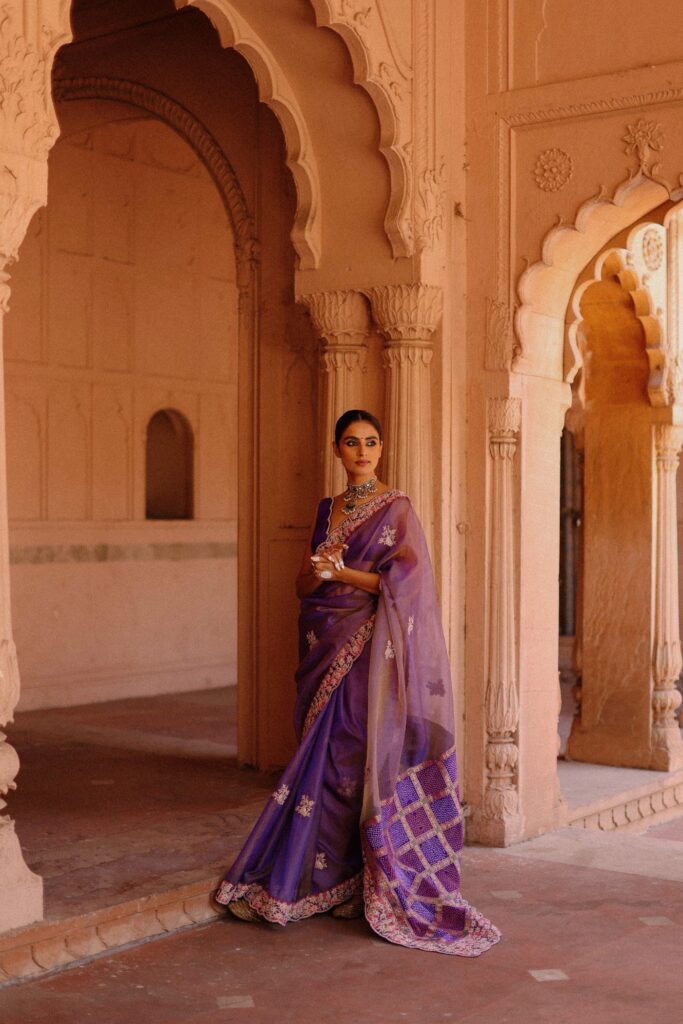
Can you describe a memorable creation that you are particularly proud of?
I have always taken immense joy in designing for brides who wish to breathe new life into old sarees or fabrics. One such remarkable project involved repurposing a client’s grandmother’s saree to create a bespoke lehenga for her. This particular saree was over 50 years old, and the base fabric had suffered wear and tear over time.
Consequently, we approached the task with great care, salvaging the zari motifs and appliquéing them onto a fresh base fabric. At times, the appliqué work proved to be delicate, and to ensure its durability, we went the extra mile by hand-embroidering it using ari embroidery. In the end, we managed to utilise the entire vintage piece, and even the remnants found new life as exquisite tassels.
What does the future hold for Asha Gautam?
Asha Gautam’s core philosophy is of a brand committed to the relentless endorsement of Indian handmade crafts. We aspire to venture into the lifestyle domain while upholding the same philosophy of responsibility, preservation, and the revitalisation of Indian crafts. I see numerous segments, industries, and demographics where Asha Gautam can make a conscious and meaningful impact, by designing a range of products in the lifestyle sector in an eco-friendly manner.
While we do aspire to expand and open stores in other cities, our focus is firmly on ensuring that any growth aligns with our brand’s core philosophy. We are actively seeking out new segments within the realm of handmade crafts, while dedicated to the revival of additional weaving techniques, Asha Gautam is also exploring new avenues, including fusion fashion, luxury prêt-à-porter, and menswear, all of which will showcase our signature weaves and embroideries.
